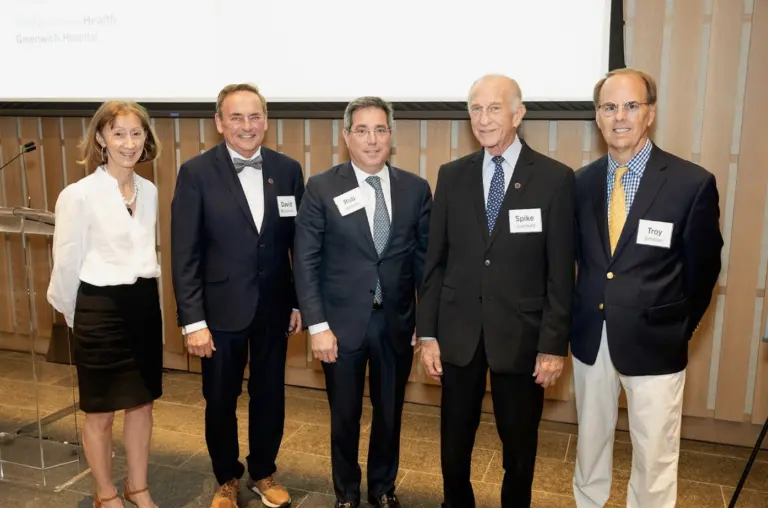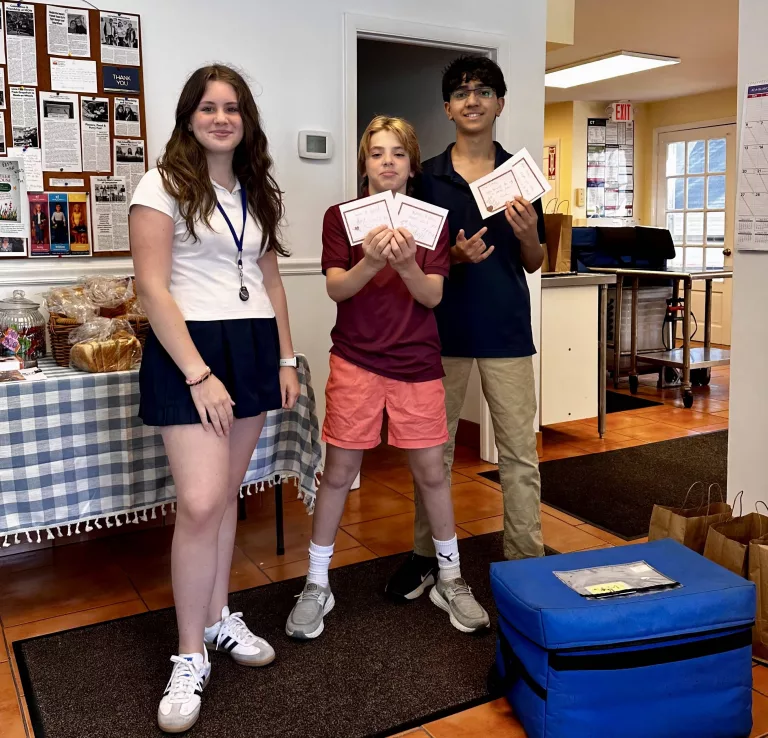By Retired Men’s Association of Greenwich
At the April 27 meeting of the Retired Men’s Association, Bob Rimmer introduced Sean McMeekin, a professor of European History and Culture at Bard College. Professor McMeekin holds a B.A. from Stanford University and an M.A. and Ph.D. from University of California, Berkeley. He recently published Stalin’s War: A New History of World War II. Professor McMeekin explained that his recent book was the product of extensive research of archival material that became available only after the collapse of the Soviet Union. He noted that he had a bit of nostalgia when talking about those illuminating archives because, given the contents of his book, it did not appear he would be allowed to access them again.
Professor McMeekin reported that the archival materials made clear that Stalin had wanted World War II to break out. Although he paid lip service to the concept of collective security against the Nazis, it was a mere chimera. His grand notion was that a war among the leading capitalist countries would leave them all deeply debilitated, paving the way for the Soviet Union and the communist ideology it embraced to prosper. Thus, he conspicuously failed to join Britain and France when in March 1939 they formally recognized Poland’s independence.
In time, Stalin recognized the risk of being drawn into the war, and he oversaw a major military buildup in 1940 and 1941. Indeed, it appears that Stalin was considering initiating an attack on Germany. Unfortunately for him, the German assault came earlier than expected, and well before Soviet preparations were complete. The result was widespread German success in the early months of the war on the Eastern Front.
After Stalin was pulled into the war, the United States, through its lend-lease program, became the Soviet Union’s lifeline, supplying it with over 9,000 planes in addition to thousands of trucks, motorcycles, and other vehicles. The United States also supplied huge amounts of food to the Soviet Union, including butter and dehydrated borscht. Stalin became so reliant on these U.S. supplies that he was outraged when President Truman cut them off following the end of the war in Europe.
Professor McMeekin provided some interesting sidenotes on the lend-lease provisions. For one thing, Soviet agents who had been spying on U.S. industry just the year before switched occupations and became purchasing agents. The same spies who had been trying to learn the secrets of the Norden bombsight were now given the same order forms as the U.S. Army and were permitted to order their bombsights from Norden. The lend-lease efforts may have helped the Soviet Union develop the atomic bomb. Among the provisions they requested and received were two key elements in the production of atomic weapons: enriched uranium and heavy water. At the time the Soviet Union requested these materials, the United States doubted that the Soviets knew enough about an atomic weapon to understand their significance, and it feared that denying the request for these materials would signal to the Soviet Union that they were particularly important – a signal that might point the Soviets toward development of an atomic weapon themselves.
Professor McMeekin pointed out that even before it lost the war on the Eastern Front, Germany’s plan had backfired. At the start of the war Germany was heavily dependent on Russia (and Ukraine) for grain, iron ore, and other essentials. Hitler had believed that a quick victory over Russia would give Germany these materials at no cost. Instead, the protracted battle with Russia meant that these supplies became completely unavailable. Professor McMeekin noted the particularly harsh position that Stalin took with respect to Soviets who became prisoners of war. Officers who surrendered were deemed traitors and subject to execution upon their return. Among those who fell into this category was Stalin’s son, Yakov, who committed suicide after being disowned by his father while a German prisoner.
While the Soviet Union wound up deeply embroiled in the European war, it remained until mid-1945 uninvolved in the Pacific war, which Stalin saw as consistent with his vision that capitalist countries would destroy each other. Stalin had signed a neutrality pact with Japan in April, 1941, and Pearl Harbor did nothing to change that. Indeed, hundreds of U.S. pilots who landed (or crashed) in Russia after bombing raids on Japan were held prisoner for years, rather than being repatriated to the United States – the country that was supporting the Soviet Army and feeding the Soviet people.
To watch Professor McMeekin’s presentation, click here https://vimeo.com/704143256.
The RMA’s upcoming presentation “White Star Lines: The Titanic and Her Sisters” by Phillip Vitiello Sr., is scheduled for 11 AM on Wednesday, May 11. We all know the tragic story of the RMS Titanic- while on her maiden voyage to New York from Southampton, England on the night of April 14, 1912, she hit an iceberg and sank with the loss of 1,496 passengers and crew. Few of us, however, may realize that the Titanic was the second of three ships built of the ‘Olympic Class’ for White Star Lines to compete for the Atlantic crossing passenger trade.
The stories of Titanic’s older sister ship Olympic and younger sister ship Brittanic are compelling in their own right. As planned by their owner, when each of the ships was launched, she could claim to be the largest ship in the world. While the Olympic would have an exciting and long career. the youngest sister Brittanic would have a short life and tragic end.
Philip Vitiello Sr. tells the amazing stories of these ships- who built them and why, and what happened to them. Also addressed is the amazing life of Violet Constance Jessop, the daughter of Irish immigrants who would sail on all three ships as a stewardess and as a nurse during World War I. She would survive the sinking of two of them.
Mr. Vitiello is a lifelong resident of New Haven, CT. He attended the University of New Haven, majoring in law enforcement administration. He has been employed for the last 25 years by the food broker “Northeast Food Marketing” headquartered in Stamford, CT. and currently serves as the Director of Marketing for the company. He has been a member of the original Titanic Historical Society of Indian Orchard, MA for over 25 years. He is a Civil War historian, a charter member of the “Friends of the Hunley” (the first submarine in world history to sink a ship in combat), and since 1998 a charter member of “TIGHAR” The International Group for Historical Aircraft Recovery. Philip has also taught a history course at Norwalk Community College Lifetime Learners Institute.
To stream Mr. Vitiello’s presentation at 11 AM on Wednesday, May 11, click here (https://bit.ly/30IBj21). This presentation will also be available on local public access TV Channels, Verizon FIOS channel 24 and Optimum (Cablevision) channel 79.
RMA speaker presentations are presented as a community service at no cost to in-person or Zoom attendees. The RMA urges all eligible individuals to consider becoming a member of our great organization, and thereby enjoy all the available fellowship, volunteer, and community service opportunities which the RMA offers to its members. For further information, go to www.greenwichrma.org, or contact our membership chairman (mailto:members@greenwichrma.org).





